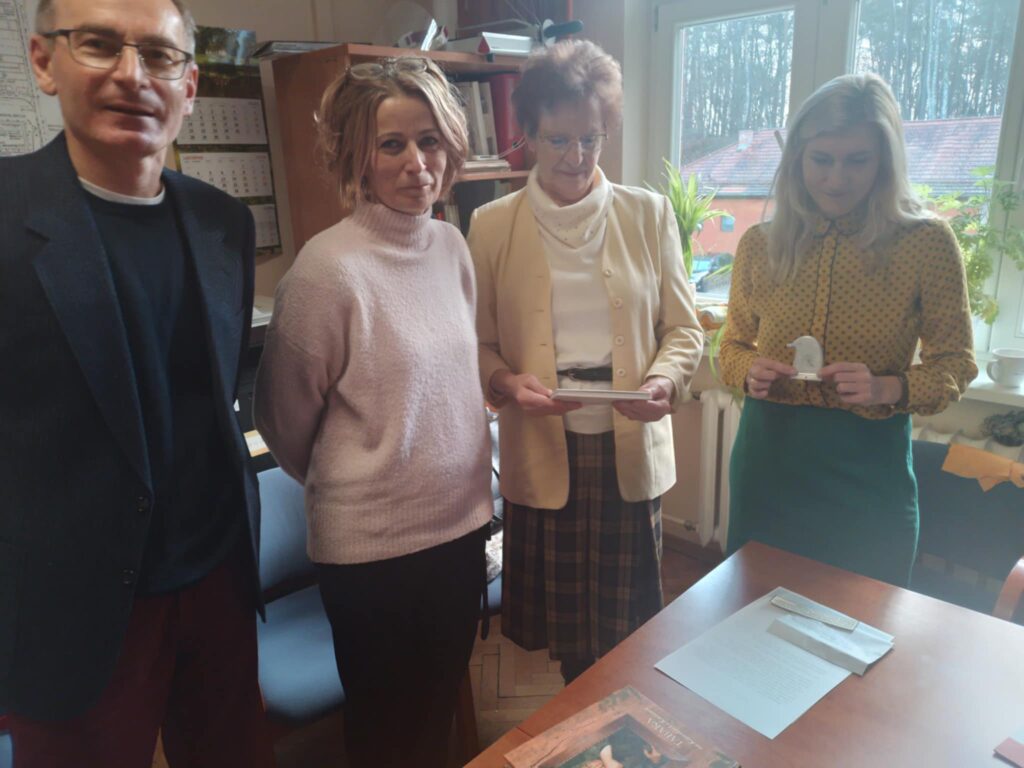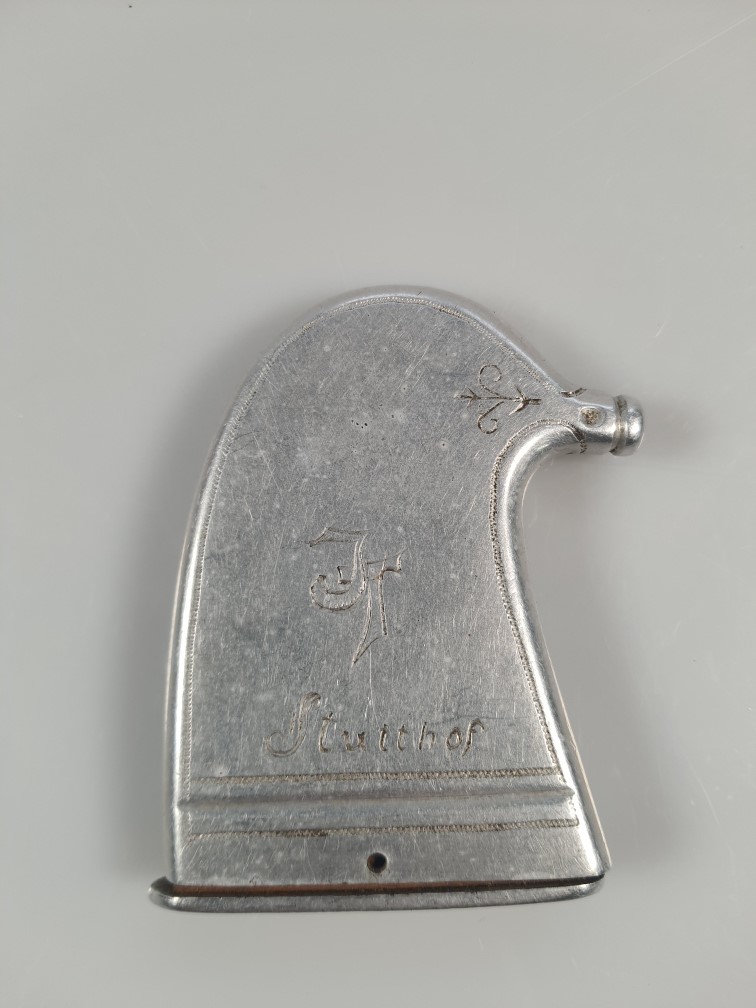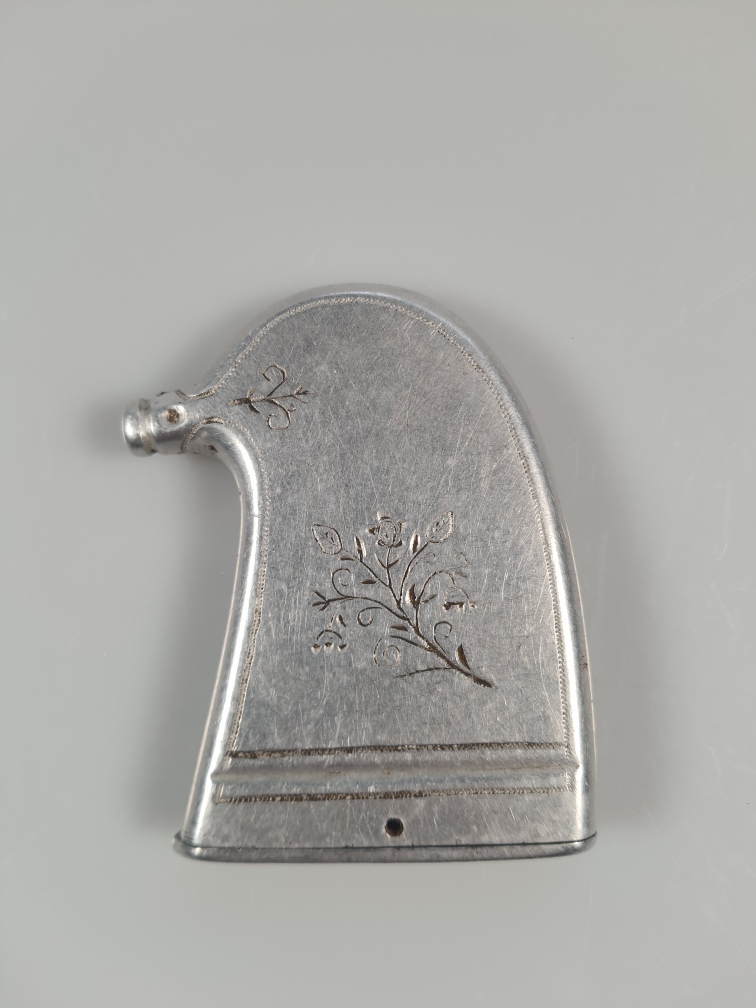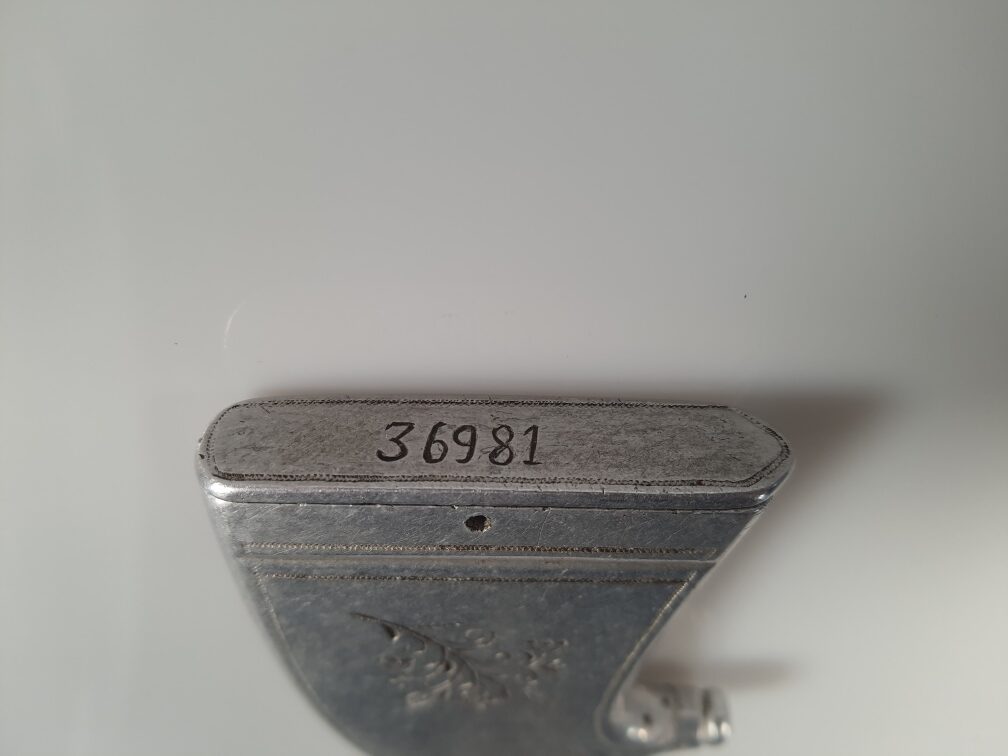Aktualności
Tabakiera – a new exhibit in our collection
Chcemë le so zażëc! (“Let’s have some snuff!”) – this is a Kashubian invitation to try this traditional substance. Although the custom of using snuff was once popular throughout Poland, today it primarily symbolizes the Pomeranian region. Today, we would like to share with you an extraordinary item that has enriched our museum collection. It is a snuffbox made in the Stutthof concentration camp by prisoner Jan Treder.

This item belonged for many years to Fr. Canon Bazyli Olęcki, the pastor of the Linia parish, who was considered the most famous snuff taker in the Kashubian region. This is not surprising, as using snuff during church services was once a common practice in Kashubia. During sermons, the snuffbox would pass from pew to pew, with the faithful using it freely. When asked about this practice, Fr. Olęcki was once quoted as saying to his parishioners: “Snuff – a useful herb, it can be used at home and in church.” Interestingly, according to the testimonies of parishioners, the priest himself did not use snuff during sermons, focusing entirely on preaching the Word of God.
When the ban on the production and sale of snuff was introduced in 1996, Fr. Bazyli became a strong advocate for repealing the law. In a letter addressed to the Marshal of the Polish Sejm, he wrote: “I am not aware of any case where using snuff has harmed health; quite the opposite – it benefits one’s well-being, brings people together, forms bonds of friendship, and helps us fulfill our duties and pastoral ministry… As a former prisoner and camp survivor, I ask: what else do I have left in my life except praising God, serving my country, and the People of God?”
Although the ban was lifted in 2000, Fr. Bazyli did not live to see it – he passed away the year before. The news about the famous priest-snuff taker spread across the entire Kashubian region. It is therefore no surprise that the renowned carver Jan Treder, in the 1970s, gifted a snuffbox he had handcrafted in the Stutthof concentration camp to Fr. Olęcki.
Traditionally, snuffboxes were made from cowhorn, and sometimes from porcelain, wood, or clay. However, the snuffbox from Stutthof was made of aluminum – a material readily available in the camp workshops. Its shape resembles the classic design of a flattened horn with a curved tip. The removable bottom is decorated with the camp number “36981,” which belonged to Jan Treder. The snuffbox also features the engraved initials of its owner, the inscription “Stutthof,” and its extraordinary decoration – a Kashubian flower, a symbol of the regional tradition associated with the use of snuff.



The donor of this exceptional item is Fr. Bazyli’s youngest sister, Mrs. Maria Magdalena Burczyk, a resident of Skarszewy. The Stutthof Museum extends its heartfelt thanks to her for her thoughtfulness and for this incredibly valuable gift that enriches our collection.

